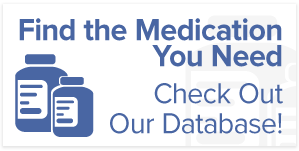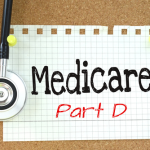Navigating Prescription Assistance in a Changing Healthcare Landscape
In a rapidly changing healthcare environment, accessing affordable medication can be challenging. Prescription costs are rising, and insurance coverage is often complex. However, various prescription assistance programs can help you manage these costs.
This guide will walk you through the steps to effectively navigate prescription assistance in a changing healthcare landscape.
1. Understand the Current Healthcare Landscape
The first step in navigating prescription assistance is to understand the healthcare landscape. With changes in healthcare policies, insurance coverage, and drug pricing, staying informed is crucial. Keep up with healthcare news, consult your healthcare provider, and review your insurance plan annually to stay updated on changes that might affect your prescription costs.
Key Tips
- Stay Informed:Subscribe to healthcare newsletters and updates.
- Review Insurance Plans:Compare your current plan with others available to ensure you’re getting the best coverage.
- Consult Professionals:Talk to your healthcare provider about how changes in healthcare policies might affect your medication costs.
2. Explore Prescription Assistance Programs
Many pharmaceutical companies, non-profits, and government programs offer prescription assistance to help with medication costs. These programs can significantly reduce out-of-pocket expenses, especially for those with limited or no insurance coverage.
Types of Programs
- Manufacturer Assistance Programs:Pharmaceutical companies often provide discounts or free medications for those who qualify.
- State and Federal Programs:Medicaid, Medicare, and other government programs offer prescription assistance based on income or health needs.
- Non-Profit Organizations:Organizations like the Patient Access Network Foundation provide financial assistance for specific medications or conditions.
How to Apply
- Research Eligibility:Visit the program’s website or consult with your healthcare provider to determine if you qualify.
- Gather Documentation:Be prepared to provide proof of income, insurance status, and other relevant documents.
- Submit Applications:Apply online or through your healthcare provider, and follow up regularly to check the status of your application.

Get your meds
3. Consult Your Healthcare Provider
Your healthcare provider is a valuable resource in navigating prescription assistance. They can provide insights into which programs might be right for you and may even help you apply.
Tips for Consultation
- Discuss Costs:Be open with your healthcare provider about the cost of your medications and ask about cheaper alternatives.
- Ask About Samples:Some providers have access to free medication samples from pharmaceutical companies.
- Seek Referrals:If your provider is unfamiliar with assistance programs, ask for a referral to a social worker or patient advocate who can help.
4. Stay Proactive and Organized
Navigating prescription assistance requires diligence and organization. Keep track of application deadlines, required documentation, and follow-up dates to ensure you receive the assistance you need.
Organizational Tips
- Create a Checklist:List the steps required for each assistance program, including deadlines and documentation needed.
- Set Reminders:Use your phone or a calendar to set reminders for application deadlines and follow-up dates.
- Keep Records:Maintain a file with copies of all applications, correspondence, and approvals.
Struggling with the Rising Costs of Your Medications?
Advocate My Meds is here to help. As a leading prescription assistance organization, they offer full-service prescription assistance programs tailored to your needs, whether it’s for heart disease, diabetes, or asthma. Start your prescription assistance enrollment and get the financial assistance to fill prescriptions you rely on.
Don’t let the changing healthcare landscape overwhelm you—get the support you need!







